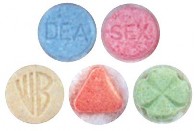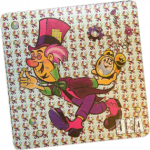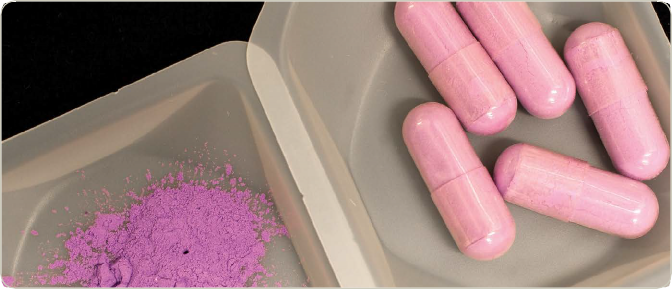3.8 Hallucinogens (an overview)
What are Hallucinogens
Hallucinogens are found in plants and fungi or are synthetically produced and are among the oldest known group of drugs used for their ability to alter human perception and mood.
What is their origin?
Hallucinogens can found in plants and their origin predates history. They are said to have been inhaled, ingested, worshipped, and reviled, used by early cultures in both sociocultural and ritual contexts.[1][2] They can also be made in laboratories.


What do they look like?
Hallucinogens come in a variety of forms. MDMA or ecstasy tablets are sold in many colors with a variety of logos. LSD is sold in the form of impregnated paper (blotter acid), typically imprinted with colorful graphic designs. Cannabis is sold as a dried plant or oil and psyilobiclin is a dried mushroom. PCP and ketamine come in powder or pill form.
How are they admininstered?
The most commonly used hallucinogens are taken orally or smoked.
What is their effect on the mind?
Sensory effects include perceptual distortions that vary with dose, setting, and mood. Psychic effects include distortions of thought associated with time and space. Time may appear to stand still, and forms and colors seem to change and take on new significance. Some individuals may experience flashbacks (fragmentary recurrences of certain aspects of the experience) without having used the substance in weeks or even months.

What is their effect on the body?
Physiological effects include elevated heart rate, increased blood pressure, and dilated pupils. Deaths exclusively from an acute overdose of LSD, magic mushrooms, and mescaline are extremely rare. Deaths generally occur due to suicide, accidents, and dangerous behavior, or due to the person inadvertently eating poisonous plant material. A severe overdose of PCP and ketamine can result in respiratory depression, coma, convulsions, seizures, and death due to respiratory arrest.
What is their legal status in Canada?
Many hallucinogens are Schedule III under the CDSA.
Chapter Credit
Adapted from Unit 3.8 in Drugs, Health & Behavior by Jacqueline Schwab. CC BY-NC-SA. Updated with Canadian Content.
Image Credits
- MDMA/Ecstasy pills, LSD Blotter Sheet, and LSD Powder and Capsule, Drugs of Abuse from: U.S. Department of Justice Drug Enforcement Administration. (2017). Drugs of abuse, (pp. 64-65). https://www.dea.gov/sites/default/files/2018-06/drug_of_abuse.pdf
- Abraham, H., Aldridge, A. & Gogia, P. (1996). The psychopharmacology of hallucinogens. Neuropsychopharmacology 14, 285–298. https://doi.org/10.1016/0893-133X(95)00136-2 ↵
- Nichols, D. E. (2004). Hallucinogens. Pharmacology & Therapeutics, 101(2), 131-181. https://doi.org/10.1016/j.pharmthera.2003.11.002 ↵

